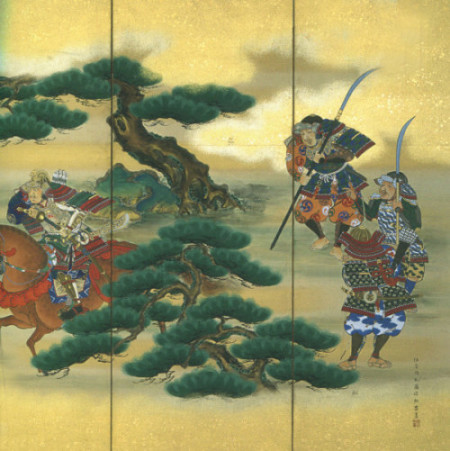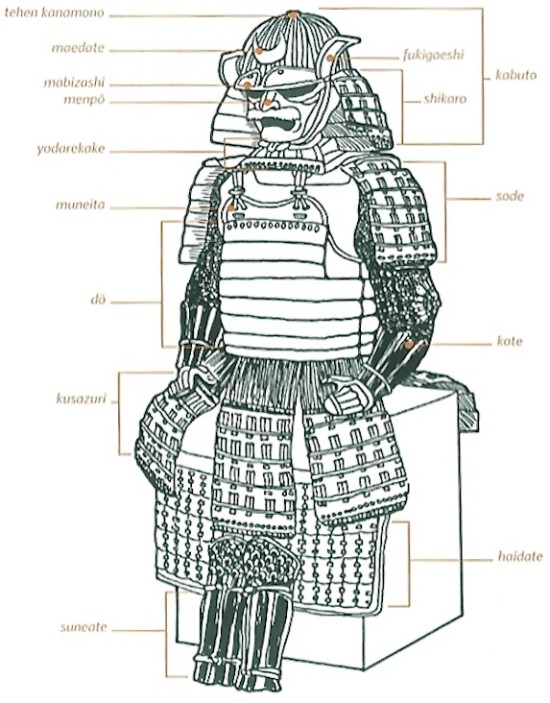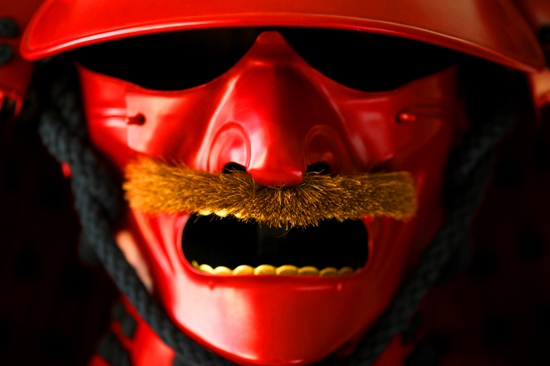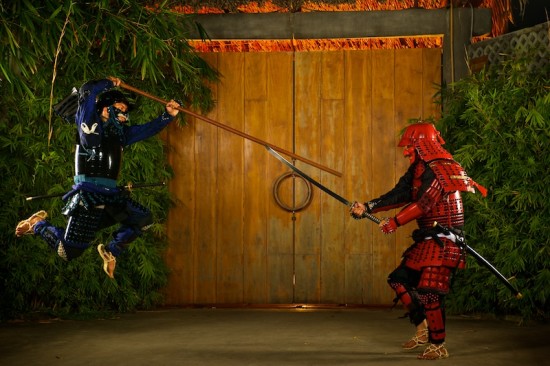Katori Vietnam Dojo Training Method
How did the samurai of old train physically so that they were able to fight in the rough conditions of the fourteenth century? What was their training method to strengthen their body and spirit for warfare? During those times in order to travel to a location where a battle would take place was already a challenge. It would take days on horseback or on foot. Soldiers had to traverse hostile terrain, hostile both because sometimes the main roads were not an option and they would have to deal with natural obstacles such as rivers or mountains. Hostile also because the local population might attack the soldiers or burn crops to deny them access to food. In addition the elements might make things even more difficult, rain, wind, high or very low temperatures all added to the challenges of the journey.
There are other things to consider, lack of food or lack of clean food and drinking water resulting in stomach problems. Many had foot infections due to a lack of proper footwear. So when they arrived at the location of battle they may have been on the road for weeks or longer. Their feet were infected. They would be hungry. Their stomach would ache and if the weather did not help much they would be wet and frozen. And then they still had yet to fight a single adversary with the prospect that they would even have to continue to fight after having been hurt in battle.

This six-panel folding screen shows a famous scene that took place during the Genpei War (1180-1185) between the Taira (Heike) and Minamoto (Genji) clans. Please note the armor of the warrior on foot. Source: Art of Armor, Samurai Armor from the Ann and Gabriel Barbier-Mueller Collection
In order to fight under such conditions wearing traditional Japanese armor, yoroi, for days on end you would need an extraordinary conditioning and mindset. The Katori Vietnam dojo training method is a minimum of three hours per session five days a week. To be in good shape physically will also help students process corrections or learn new techniques more easily. In the past private training sessions in Shinbukan dojo, Japan, would be a minimum of six hours. These days private sessions take only three hours. So it is imperative for our students to ready themselves for a regime they will be part of when training in Japan.
In kobudo the training focuses on basics, basics and basics. All our training sessions start with basic forms followed other forms of training that strengthen the physical and technical aspects. Otake Nobutoshi sensei often says: “Omote is forty percent cutting like this, so if this cut is strong, you are almost halfway there”.
Wooden weapons
In order to have a margin of safety, practitioners in Japanese martial arts use training weapons made of a special kind of hardwood. Metal weapons are also used, but if used in daily training they would soon break or otherwise damaged, whereas the wooden substitutes are more durable and far less costly to replace. The relative safety afforded by the wooden weapons is another obvious advantage. Wooden weapons, however, must not be seen as inferior substitutes for metal ones. In many types of combat they are superior to their metal counterparts.
Training in yoroi
Tenshin Shoden Katori Shinto Ryu has an all encompassing curriculum and one of the first things all practitioners have to master is omote no kenjutsu. These are sword techniques used when wearing armor called yoroi in Japanese.
During training Otake Risuke often gives clear instructions on how to move in, evade cut and deflect when wearing armor. Within our dojo we have set the goal to properly transmit Tenshin Shoden Katori Shinto ryu. According to our standards this should include knowledge about yoroi. Students should know how to wear them, how to dress someone, how to take maintain the armor and how to fight in one.
The benefits of the Katori Vietnam dojo training method such as with wearing yoroi are apparent immediately. Firstly there is a basic fact that students deepen their knowledge about this martial apparel: its history, the cultural elements, its uses defensively as well as offensively. Secondly students become familiar with wearing the armor and dressing fellow students of the ryu in yoroi just as current military personnel should acquaint itself with their gear. In which order does one dress in armor, which knots are used where, how to bind parts of the suit without inhibiting movement but still limit the openings offered to the enemy.

Names of different parts of the yoroi.
Source: Art of Armor, Samurai Armor from the Ann and Gabriel Barbier-Mueller Collection
When moving in the armor it becomes clear how the omote kamae and kata of the ryu work. However, in general certain movements executed in armor are a little different while training without armor because of the restrictions of the armor. Without divulging too many details one of the main things is that when training without armor stances are a little lower as well and students find training in the armor tiresome. These insights clearly have a positive effect on the way practitioners have changed their training: stronger stances, bigger moves and more focus on stamina by training three hours continuously every training. The armor is not only a defensive instrument but can also be used offensively for example by using shoulders checks or some sharp parts of the helmet for head butts.
![Katori Vietnam Dojo Training Method shobukan This armor ensemble was property of the Yoshiki branch of the Mori clan - an important family that dates back to the twelfth century. The kiri mon (paulownia crest), the symbol of the Mori family, adorns many of the items. The presence of the secondary tomoe mon (swirl crest) on the armor further verifies the family's identification [...].Source: Art of Armor, Samurai Armor from the Ann and Gabriel Barbier-Mueller Collection (page 328)](https://katorivietnam.org/wp-content/uploads/2015/05/Japanese-yoroi-e1433765038290.jpg)
In this training method practitioners not only wear armor them selves but also to have someone opposite them in armor while performing a kata. This has great benefits. After training on a real yoroi the need for precision of cuts and stabs becomes far more apparent because the targets become extremely clear. What strikes most students is how small the targets actually are. This understanding has resulted in most students training with greater care for the techniques in particular and appreciation for the deep knowledge embedded in our ryu. One last benefit is that the weight of the yoroi, twenty kilos, further helps the conditioning of stamina in our students. Yoroi training is now part of our regular training.
Moral values and Mindset
Apart from the physical aspects martial values and a correct mindset would have been indispensable to deal with the hardship of ancient warfare. One example is the proper training or etiquette. Everything starts with proper etiquette. Without etiquette and respect martial arts are mere training in violence.
In our ryu the oath already steers people in the right direction. If one studies the four points of the oath carefully one will find that they are applicable even today almost six hundred years after they were first put to paper. For example the promise not to visit disreputable places as a trained martial artist makes sense even today. One immediately understands that the environment, the time and the state someone is in when visiting such places could more easily lead to physical altercations between you and someone else in that location. If by accident you would hurt someone gravely even in self defense the results can seriously hurt our martial tradition. One can imagine that family members or even employers of the person you hurt will ask for compensation or take revenge. When the police is involved the possibility exists that they will visit the dojo where you learned the skills you used to defend yourself. They might close the dojo which will affect Soke at hombu dojo and Otake Risuke sensei at Shinbukan dojo in Japan directly as your teacher will have to clarify the reasons for the closing and eventually this will affect the reputation of the martial tradition.
Shobukan dojo follows and incorporates the values our founder has passed on to us. So in addition to these rules, Ienao, the founder and Otake Risuke sensei transmitted the traditional values of this art. Sensei instilled in us qualities such as courage, self-reliance, self-sacrifice, obedience, discipline, patience, careful judgment, courtesy, and frugality. The Katori Vietnam dojo training method attempts to instill these qualities on a daily basis. Such qualities help us live a stable and peaceful life. Otake Risuke sensei teaches also by example and to see him teach is to understand both the technical parts better as well as the qualities above.



